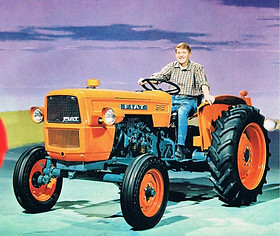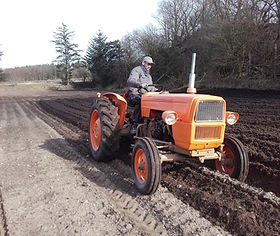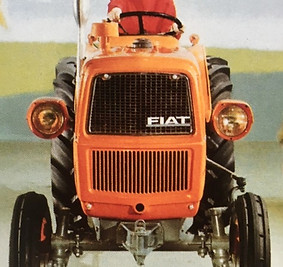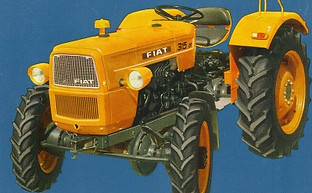top of page
FIAT 315

_edited.jpg)






In the early 60's, Fiat launched an effort to streamline their lineup, with the intent of making their tractors easier to market and service, thereby strengthening their position internationally.
Fiat tractors had a reputation for being reliable, easy to maintain, and well priced. But not exactly for being or having a cohesive and original design language. For the replacement of the 100 series, Fiat therefor decided to hire the help of non other than Pinninfarina, the studio behind some of the most beautiful cars in history, and for many years Ferraris preferred designer and coachbuilder.
Introduced in 1965 the new, and officially Fiats first series, would be known as the "Diamond Series".
The 315 was the small-to-medium size tractor in the lineup, and an evolution of the 300 series that went before it.
It was sold in Italy and internationally as the Fiat 315, but in France it would be sold as the Someca 315. Someca being the agricultural arm of Fiats French subsidiary Simca.
Like the smaller 215, the 315 was constructed using a heavy box section steel frame.
In one end attached to each side of the gearbox and differential casing, in the middle carrying the 605 engine, and the other end attached to the front axle.
The 315 shared its six forward and two reverse gearbox with the 415, including the standard PTO, locking rear differential and "Control-Matic" three-point hitch system.
But unlike the 300 and 400 tractors that came before, the gearbox now featured synchronizers between in its four highest gears. Great for road use, and a first for Fiat.
The 315 adopted the upgraded 605 four cylinder, watercooled prechamber diesel engine, with a displacement of 1.901 cc, developing 34 hp at 2.500 rpm, and 108 nm at 1.600 rpm.
The Diamond Series enjoyed considerable success, being recognized for their new and modern design, performance, price and reliability. Production at Modena rose quickly from 34.088 tractors in 1964, to 41.156 in 1966.
bottom of page
